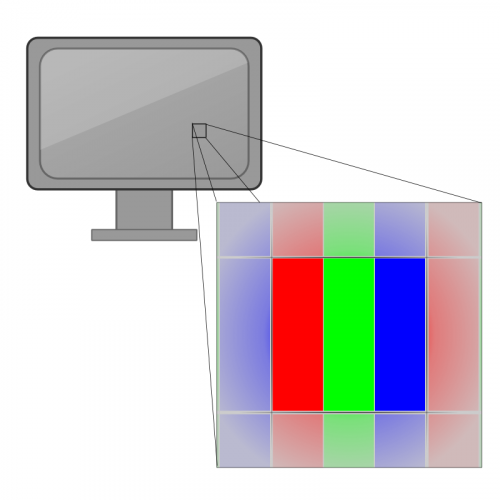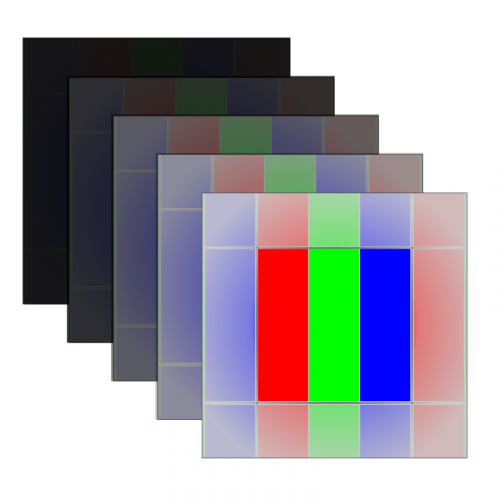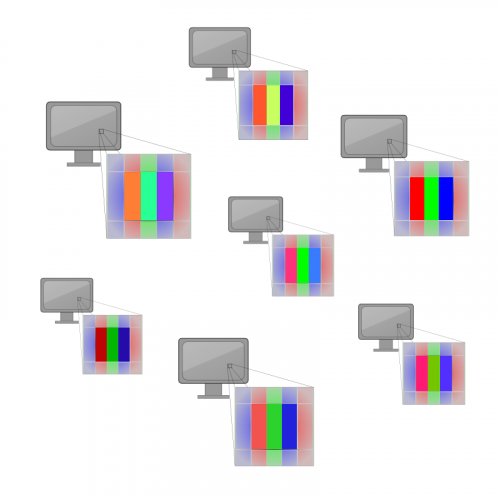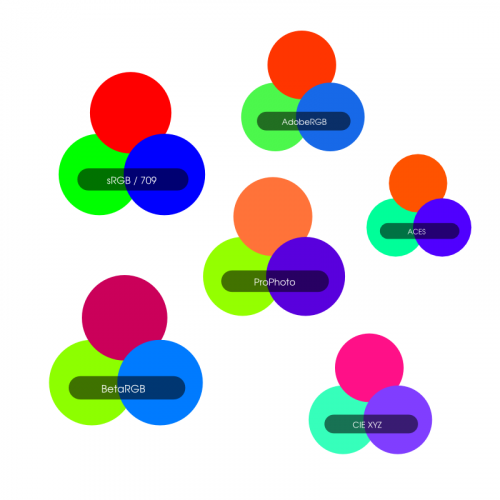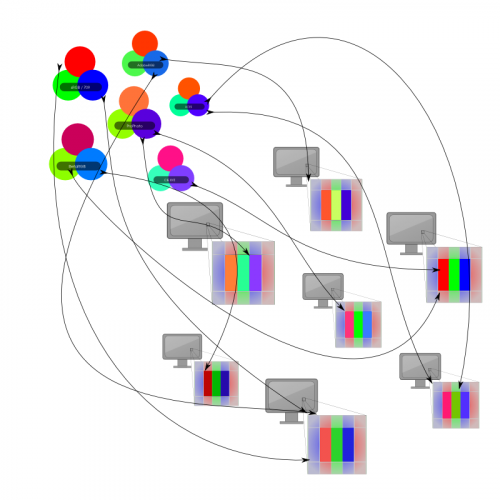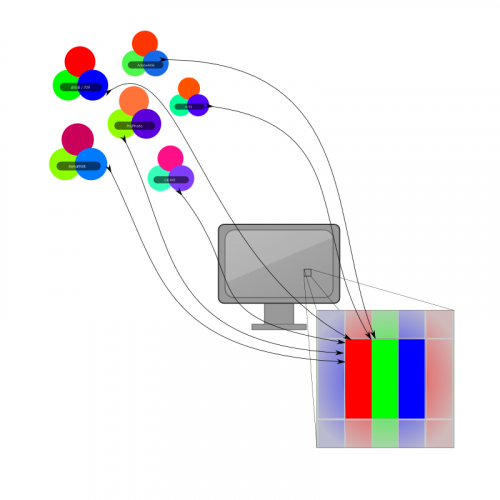利用者:Sobotka/Color Management/Color Primaries and Issues
< 利用者:Sobotka | Color Management
2017年10月10日 (火) 04:31時点におけるwiki>Sobotkaによる版 (→When Color Managed, the Output is Consistent)
目次
A Completely Base Level Understanding of Primaries
The colour wheels have been somewhat managed in recent builds. There is more work to do on them. This document remains as a visual explanation as to what colour primaries are and how they factor into colour management.
Primaries
- If you were to use a very strong lens to zoom in on your display, you will see three components to each pixel, which are called primaries.
Controlling Primaries
- You can only increase or decrease the amount of light emitted from a primary light.
- You never can change the color of a primary.
- The only way to change a pixel's color is by changing the levels of the primaries.
- You can never make something more saturated beyond the original colors of the primaries.
Different Primaries
- All displays have different primaries.
- They are not just more saturated, they are wildly different colors of filters.
- Tremendously expensive wide gamut professional displays have radically different primaries.
- Even displays from the same manufacturer and the same model with identical part numbers will be slightly different, and drift with age.
- Consider that every single Apple device since 2015 does not use the REC.709 lights that sRGB uses.
Colorspaces Have Different Primaries Too
- All working colorspaces have different primaries as well.
Color Wheels in Blender
- Color wheels in Blender simply dump the data value from minimum to maximum with no clue about the differences between spaces, which means the resultant color is totally random.
- No amount of money spent on hardware can save you from this as only color management can.
When Color Managed, the Output is Consistent
- When a system uses color management, the output is transformed to display the intended color as best as the output's primaries can. Someone working within Blender can select a colour that, within the limits of their hardware, represents the colour in their reference as closely as possible.
All Color Must Be Color Managed
- A color that is output must always route through color management systems in place to avoid this chaos. Blender's color wheel currently doesn't, and must.
